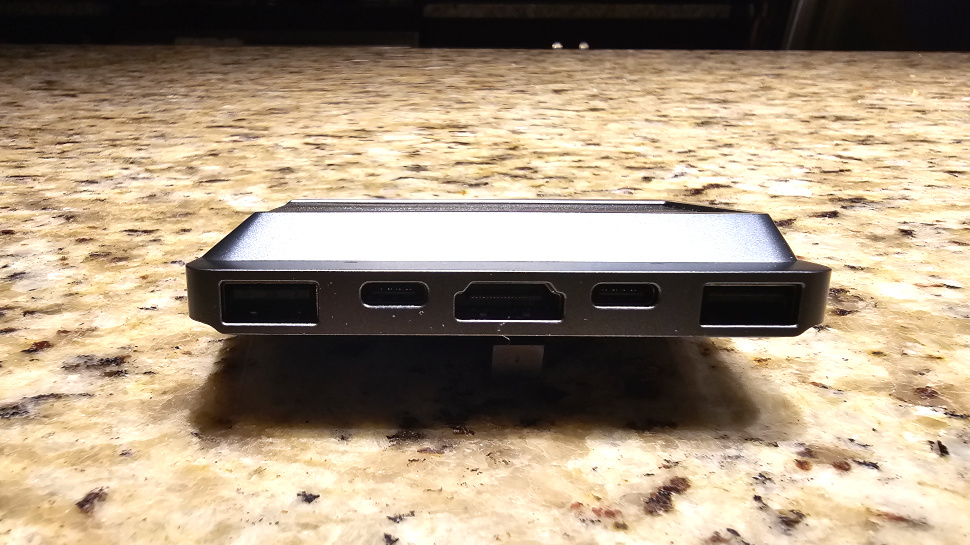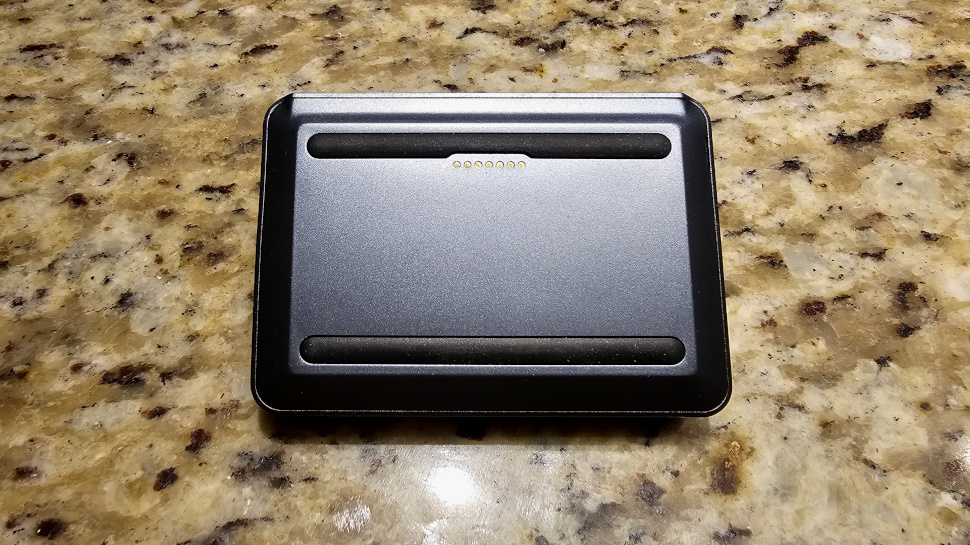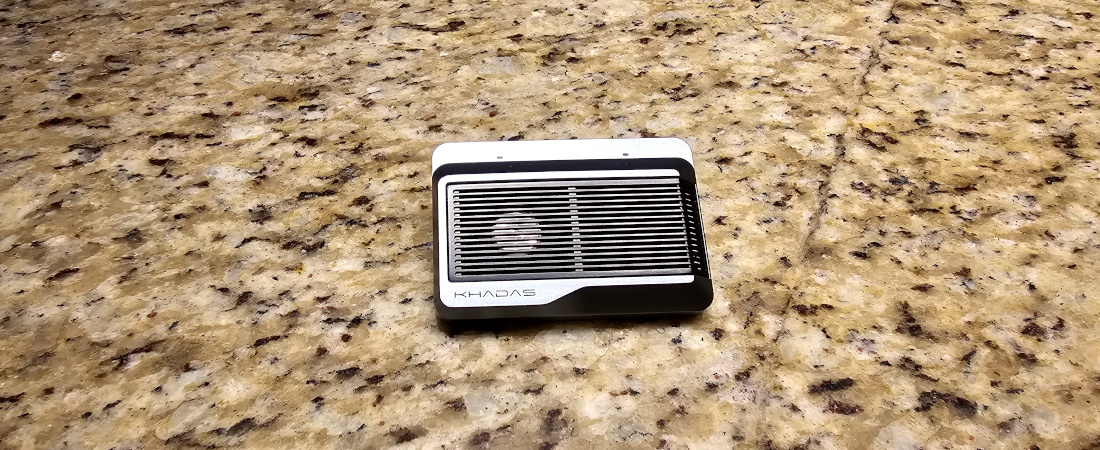TechRadar Verdict
The Khadas Edge2 defies logic by having an AI processor and an unbelievable amount of processing power in a small volume. It is a complete PC with a stereo microphone, eMMC memory, and a real-time clock.
Pros
- +
Well designed bootloader
- +
Snappy CPU
- +
Compact
- +
Low-power
- +
Schematic available
Cons
- -
Expensive
- -
Lack of external I/O ports
Why you can trust TechRadar
The Khadas Edge2 offers best-in-class CPU performance in a credit-card form factor.
CPU: RK3588S
GPU: ARM Mali G610
RAM: 16GB LPDDR4 2112MHz
Storage: 64GB eMMC 5.1
Expansion: 7-Pin Pogo (USB, UART)
Display: 1 x HDMI 2.1
Networking: 1 x WiFi6, Bluetooth 5
Ports: 2 x Type-C, 1 x USB3.1, 1 x USB2.0
Weight: 70g
Dimensions: 8.9cm x 6.2cm x 1.6cm
Power Consumption: 1W idle, 10W during benchmark
The all-plastic case hosts five connectors and a small fan that is completely silent most of the time. Like similar platforms, the Edge2 requires only one Type-C connection supporting power delivery and Display-Port mode to operate as a desktop PC.
With an octa-core ARM CPU achieving 2.25GHz, up to 16GB of LPDDR4, and 64GB eMMC storage, the Khadas Edge2 can become a high-performance multimedia unit, processing large amounts of data from cameras or sensors. The ARM computer supports one USB3 Type-A, two Type-C, and one HDMI2.1 connector. One peripheral connector for various low-speed I/Os and two MIPI DSI connectors are also available internally.
The Khadas Edge2 ARM PC is available in four models. A Maker Kit containing only the bare PCB assembly sells for $199 for the basic version, with 8GB RAM and 32GB of eMMC. Adding $60 gets you twice the capacity, 16GB RAM and 64GB eMMC. For an extra $50, the owner receives the Edge2 in a small case complete with a cooling fan. An optional docking station is available for $35 that provides wired Ethernet and serial connectivity.

Khadas Edge2: Design
The Edge2 is unbelievably tiny and ships in a compact white box without any accessories. The plastic gun-metal colored case measures 8.9 cm x 6.2 cm x 1.6 cm for 70 gm. Air vents on the top provide airflow generated from the built-in fan. The bottom side of the case holds two rubber pads, allowing the PC to stay on a flat surface without any risk of sliding.
The Khadas ARM PC carries two LEDs at the top to display the current state of the platform. Three push buttons on the right allow turning on and off the PC, resetting it, and changing OS through the function button. A small hole on the side serves as input to the built-in microphone. The bottom cover easily separates from the top by prying a small slot.
The Edge2 board is tailored for makers and hackers by featuring several cameras, displays, and IO connectors, although all of them are internal. On the bottom, a set of pads brings USB 2.0 and UART interfaces to the external world. Such a connector is handy but requires an additional docking station. Another great asset Khadas offers is the availability of product schematics, allowing owners to troubleshoot the board if things go sour.
At the heart of the Edge2 is an 8nm Rockchip octa-core ARM CPU offering higher processing power than similar products. The big-little architecture allows substantial idle power saving by turning off the speedy cores. Khadas has gone above the competition by offering 16GB of LPDDR4 and 64GB of eMMC5.1 storage, something unheard of in the Raspberry Pi world. In addition, a WiFi6 module compensates for lacking a Gigabit Ethernet port.
Khadas Edge2: In use
Turning the Edge2 into a simple desktop PC requires plugging Type-C cables that can provide power and a DisplayPort outlet. The two on-board Type-C connectors have dedicated use, with the right-most for power, while the left connector supports only display and USB peripherals. The unit starts when power is applied. Two multicolored LEDs next to the Type-C connectors indicate the board’s status.
Booting the Edge2 lands the user into Khadas’ OOWOW menu, allowing the installation of several OS on the eMMC memory. Since the Edge2 lacks an Ethernet port, the device gets updates and OS variants through the WiFi 6 connection. Installing Android 12 takes under one minute, turning the Edge2 into a speedy Android box. Other available OS are Ubuntu 22.04 and Windows 11 for ARM.
Khadas is one of the few manufacturers to release product schematics. This priceless document allows tinkerers to understand the innards of the board and provide a guide if repairs are needed. It also serves as a reference to understand the purpose of a particular push button or obscure connector.
Geekbench 6.1.0 for ARM was run on the Edge2, generating scores of 844 in single-core and 3054 in multi-core. The platform outperforms a Raspberry Pi5, mainly in multi-threaded applications. The RK3588S CPU has a built-in neural processor that excels in AI applications, something lacking in a Pi5. We were impressed by the power consumption while running the benchmark, reaching 10W only during the last stages. The Edge2 idles at 1W with only an active SSH session.

Khadas Edge2: The competition
The price of Khadas’ latest ARM computer puts it in the premium category for SBCs. It has some remarkable technologies, such as an NPU and plenty of IO ports, while exceptionally well built. That said, it is difficult to see someone expending just under $200 for an ARM PC right now, especially with the arrival of the Pi 5.
The Raspberry Pi 5 is affordable but will not beat the Edge2 in raw processing power. If you want a mini speedster that consumes little power, the Edge2 is for you. The Edge2 also has other goodies such as an accelerometer, stereo MEM microphones, and the often look-down RTC circuit that will keep time even with no power. Finally, the Edge2 has an eMMC module that will be faster and more reliable than the micro-SD memory found on the Pi5.
| Header Cell - Column 0 | Khadas Edge2 | Raspberry Pi5 |
|---|---|---|
| CPU | RK3588S (2.25GHz) Octa Core (A76, A55) | BCM2712 2.4GHz Quad Core (A76) |
| Graphics | Mali G610 | VideoCore VII |
| Display | 1 DP, 1 HDMI | 2 HDMI |
| Storage | 64GB eMMC5.1 | microSD |
| Memory | 16GB LPDDR4 | 8GB LPDDR4 |
| Network | WiFi6ax | 1GbE LAN WiFi5ac |
| External I/O | SPI, I2S, I2C x 2, SPI | 40 Pins |
| CoProcessor | 6TOPS NPU | N/A |
| Power Consumption | Idle: 1W | Idle: 2.7W |
| Price | $199 | $75 |
Khadas Edge2: Final verdict
The Edge2 is an ARM platform targeting tinkerers and hackers that can turn from an Android box to a Linux workstation within a few minutes. Khadas has done a fantastic job with the OOWOW boot menu, letting users select different OS in only a few steps. It is silent, can fit in a shirt’s pocket, and is a complete solution with an onboard non-volatile memory. The lack of a Gigabit Ethernet could have been a real showstopper, but thanks to the WiFi 6 radio module, wireless throughput should be similar to wired Ethernet.
Buy It If
You need a desktop replacement with a speedy CPU, and space is at a premium.
Dont Buy It If
You want to connect it to hardware and tinker out of the box.
Jacques Laurent is passionate about electronics and semiconductors.
